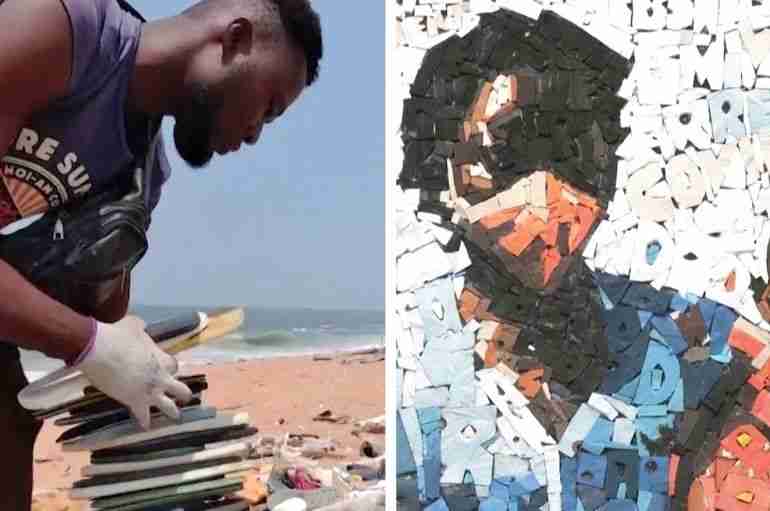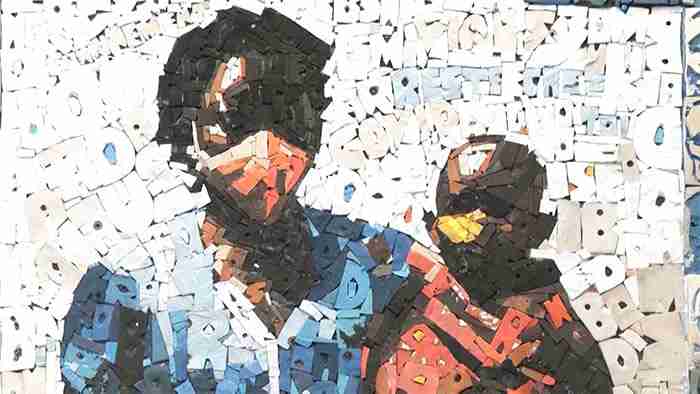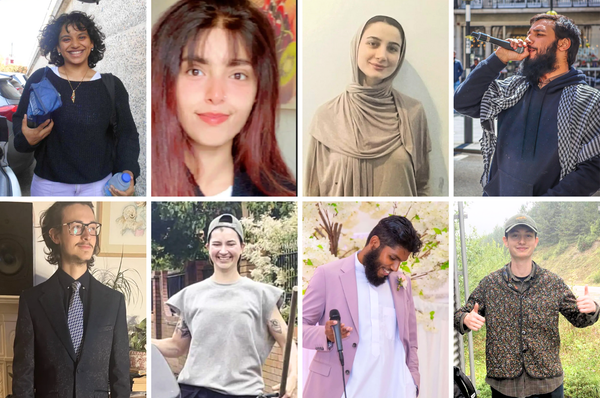This Ivory Coast Artist Collects Plastic Waste From The Ocean And Turns It Into Stunning Artworks
Ivorian artist Aristide Kouame combs the Abidjan’s coast while collecting waterlogged flip-flops he finds on the beach. He takes them home, cuts the rubber scraps into pieces and uses them to create artwork that then values at nearly $1,000.

Ivorian artist Aristide Kouame combs the Abidjan’s coast while collecting waterlogged flip-flops he finds on the beach. He takes them home, cuts the rubber scraps into pieces and uses them to create artwork that then values at nearly $1,000.
Kouame carves shapes, letters and faces into the rubber soles, before then creating his own paint by grinding whatever remains into piles of technicolor pigment.
“This is waste that men dumped into the sea and the sea brings it back to us because she doesn’t want it. The environment doesn’t want the negative things that man gives away. So the sea brings everything back to us,” he said.
“It’s a way for me to fight against pollution, I tell myself that the waste that man dumps in the water, the sea, nature doesn’t want it and gives it back to us, so I recuperate all this and give it a second life through my work,” he added.

, around 13 million tonnes of plastic waste are dumped in the oceans worldwide every year, with Ghana and Nigeria being the biggest contributors in the African continent. Both countries occupy the same coastline from which Kouame collects his rubber supplies.
In many West African urban beaches, plastic waste is strewn across the coast as rubbish that is thrown into the city canals are then carried out to sea, before being brought back to shore with the shifting tide.
“I am removing this burden on nature, I am removing something that disturbs the beach because I don’t like to see it dirty,” Kouame said.
He has become one of Ivory Coast’s most original and provocative working artists, and his art has hung in galleries across West Africa and parts of Europe.
His canvases have been filled with incredible people and messaged, from portraits of civil rights leaders to more abstract pieces where themes like climate change, COVID-19 and wealth inequality lie underneath the art.

“These faces, for me, they represent society, these faces next to each other is humankind and humankind needs an environment that is pleasant to live in,” Kouame said.
“To go and seek these flip-flops on the beaches, it means he is an actor in the preservation of the planet, the coastline,” Sandrine Marmisole, the director of the Eureka Art Gallery who is a supporter of Kouame’s work, said.




